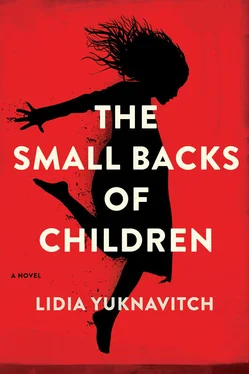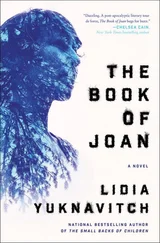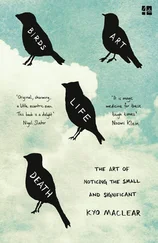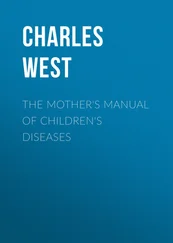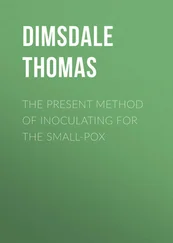It goes without saying that they both bleed, numerous times.
Biting, scratching, tearing, cutting.
It goes without saying that they paint together with blood.
Four days.
A bloody, messy lovemaking.
That’s it. That’s the scene.
When the girl was walking toward the door of the artist’s warehouse, there was a voyeur.
The photographer.
As random as any image of our lives, she happened to have returned to the States then. She happened to be walking down the street going in the other direction. She was not, in fact, thinking of the American male painter, even as she knew his studio was brushing her right shoulder. Her life path took her past the studio plenty of times, and this time she was thinking of more important things.
But that day she saw the face of a girl-turned-to-woman that made her gasp. The fall air pulled into her lungs, then shot out again.
The prizewinning face, the face that changed her life forever.
Older, yes, much, but still.
Her face burned as it was into her retina, her skull, her heart.
And she is fully aware of what has transpired in the plot of all of their lives. The photographer knows the story. They told her in e-mails and faxes and phone calls. She had never let it enter her mind. At least not fully. She couldn’t. Too much. The image incarnate. Too much.
In fact, though they are not aware of it, she has severed her relationship with this company. She cannot bear the weight of them, and her new life has somehow untethered itself from everything she was connected to before. She hasn’t the heart to tell them; her plan is simply to live without them.
The only one of them she wants to see, was on her way to see, is the writer.
They say she has recovered.
They say she is alive with writing.
They say the girl’s story — and her alive son — and the drive of her husband — brought life back to her. That they pieced her back together from a dead place. Strange made-up family.
She didn’t let it into her and she didn’t let it be true and she didn’t think. She said to herself, Don’t think. Too much.
And so, as she walks briskly to see the writer, whom in truth she wants to devour with a kiss though she is incapable of doing so, she sees the girl from the photo. Her photo. The girl who was lost after the photo.
She sees her enter the warehouse building of the American male painter.
She stands there dully for several minutes.
Still shot.
And then she walks back to her car and sits in it for four days, eating PowerBars, squatting by the sidewalk to pee when no one is looking, walking to a corner café to shit or eat or drink more, unable to leave until she witnessed the girl again.
But the girl does not reappear. She thinks perhaps she missed her in one of her sprints to the café, but somehow she also thinks she did not, that she is inside, with him, that this is how history moves, a man and a woman, violence and desire, time and the moon and nations in fragments and nonsensical bursts.
Her hair looks like hell.
Her pussy and her armpits itch.
How long will she wait for the image of the girl?
When the photographer finally takes the elevator up and opens the door to the loft and walks up the stairs to where she can smell the scent of human, what she sees first is the body of the girl covered in red, which she takes to be blood, splayed out ass-side up on a futon. Then she sees the artist leaning on the ledge of the loft wall, then she sees the gun — a gun — on the floor. She sees the gun and all she can think is, This is the gun. The son of a bitch has kept the gun, all these years, and now his true colors are all over the fucking place — he’s shot another one. He’s shot another woman. Since he is not moving — he looks as if he’s in some kind of trance, or he’s so drunk he can’t stay upright — she moves calmly toward the gun on the floor and picks it up and aims it at him.
“What have you done. What the fuck have you done.”
To which he responds by opening his mouth, closing his eyes, and raising his hands palm-side up. He looks like a middle-aged Jesus, bloated and puffy with drink.
She makes a bad assumption because of. . well, everything. Her past, her present, everything they are and have been and everything she wishes she could have been and everything she has become. She assumes the girl is dead, since she isn’t moving.
Then, with the calm of a woman who knows what’s what, she aims very simply and without drama and shoots him in the chest.
He topples over the loft wall to whatever.
And here is a detail you probably wish I would leave out:
The photographer has her camera with her. She turns and photographs the body of the seemingly dead girl.
The book of photography that will come from this image will be filled with young women in the throes of desire or danger, and it will be titled She Placed Herself Between Violence and Desire , and it will lead to a great deal of money and a documentary film and quite a bit of fame.
The body of the male artist she leaves broken and bleeding on the ground floor of the loft. She doesn’t look. She doesn’t look.
What is the measure of loss?
It is in the hands, the girl-gone-to-woman thinks. It may be the only thing she knows. It is not the heart. It has never been the heart. It is astonishing how much myth has been devoted to that fist-size muscle, that blood pump.
After they have painted several blood paintings and several not-blood paintings, after they have fucked each other every way possible without once thinking of love, either of them, after they have come and pissed and shat and sweated and screamed and scratched and cut and bitten and everything else, they are reduced finally again to their animal selves.
In a quiet moment of breathing and drinking wine and staring into space, she asks him if he still has the gun.
He looks at her.
But he does not say, What gun? It is the gun from the story.
Of course he still has the gun.
She asks if he will show it to her.
His hand slips under the futon where he keeps it. Of course he shows it to her.
She fingers it. She turns it and turns it between her strangely bloodied hands. Her hands that have every possible trace of human on them.
He is not thinking, This woman is about to shoot me.
She is not thinking, I am going to shoot this man.
But neither are they not thinking those things, if by thinking we mean the mind brought to the very cusp of action. Even mindless action.
So when she points the gun at him, and he doesn’t move, and he closes his eyes, and he smiles very faintly, and when she pulls the trigger, without any kind of emotion in her at all, a person might wonder what it is that she does think and feel.
What she thinks and feels is this: This is a world of men. They come into your country, they invade your home, they kill your family. They turn your body into the battlefield — the territory of all violence — all power — all life and death. And we take it. We do. We keep taking it. We have lost track of the reasons we do not slaughter the world of men, but we do not. Yes, there are good men. She sees the face of her father. She sees how the filmmaker loves the writer. She sees the yet-unwritten life of the writer’s son. She sees her. . brother. Beautiful smear. But it is the world of men that creates pure destruction. And this is a truth we cannot bear: Since we bear them into the world, we cannot kill them. Cannot be done with them. Cannot exile them into oblivion.
We simply keep going, letting them enter us and seed us, unable to stop loving the meat and drive of them, for without men, would the world even spin in its orbit? The action of a man — without it, would there simply be a hollowed-out black hole? Empty space?
Читать дальше
